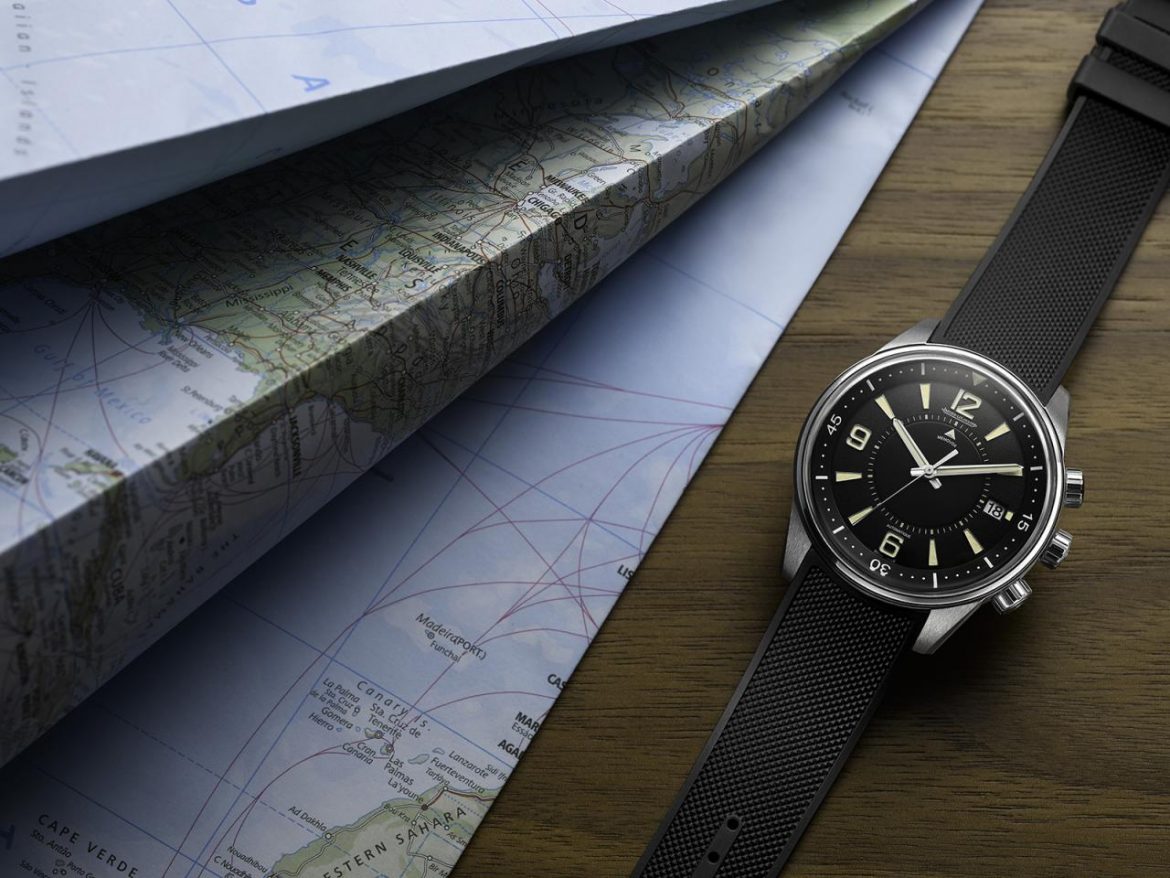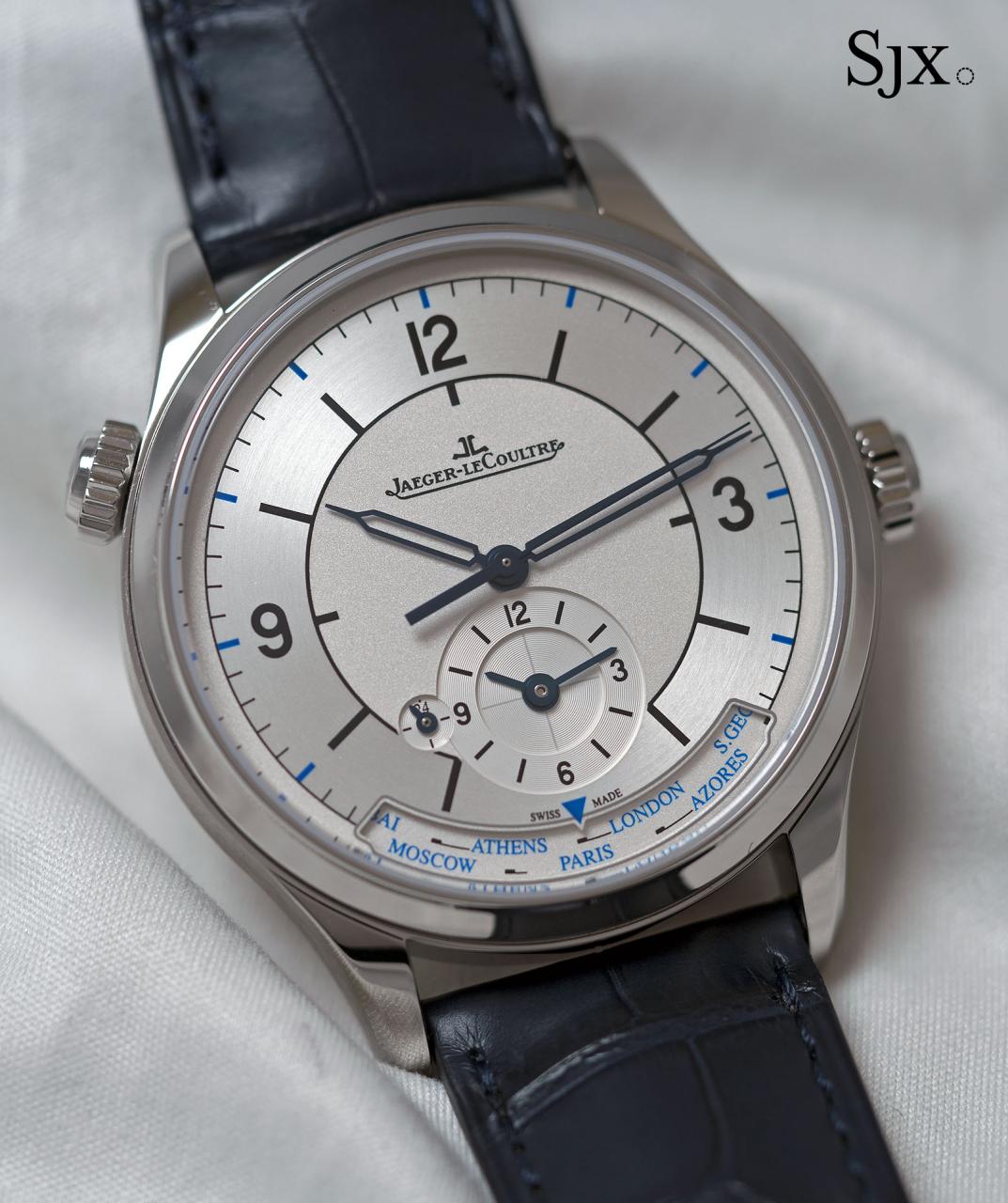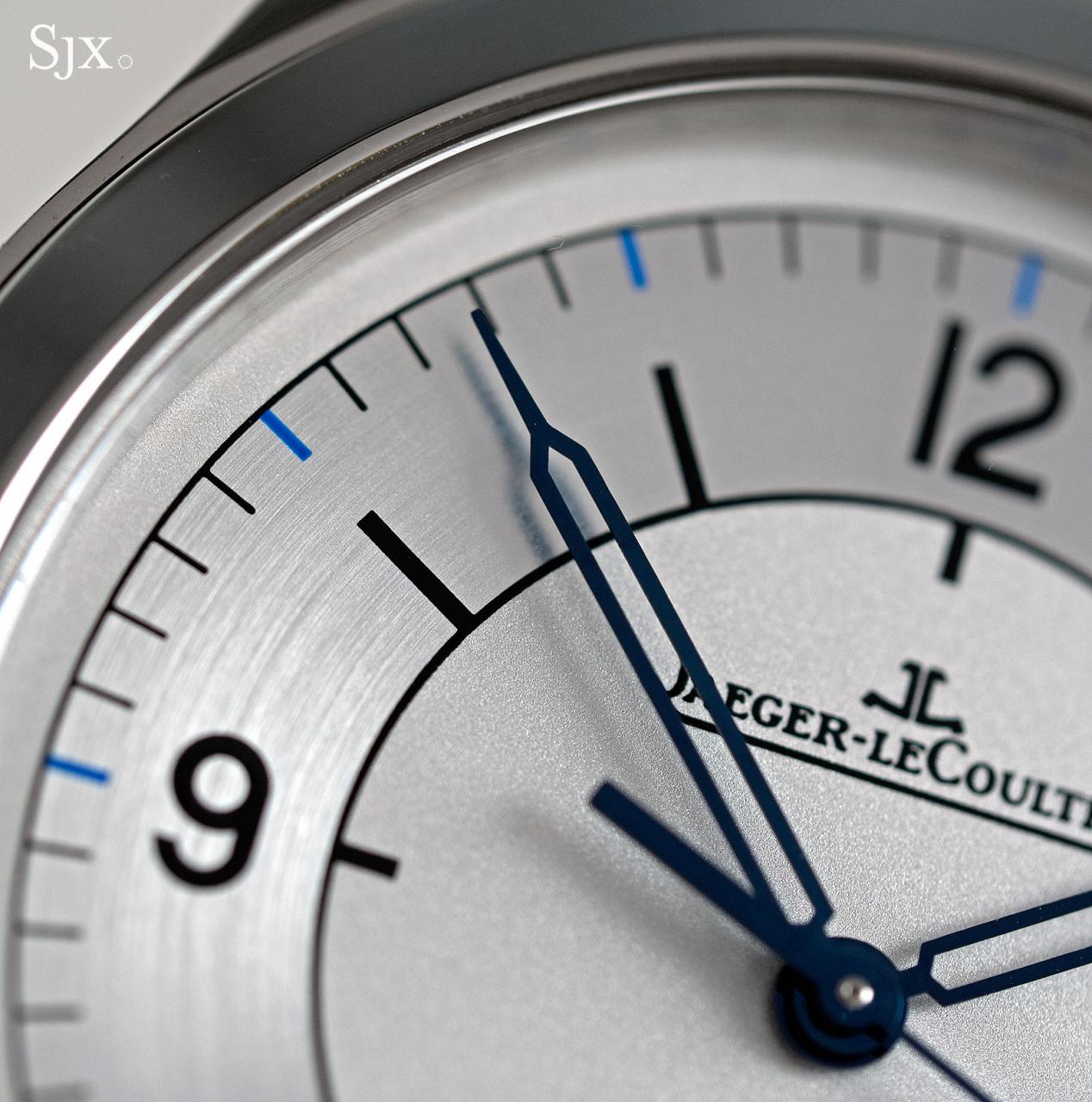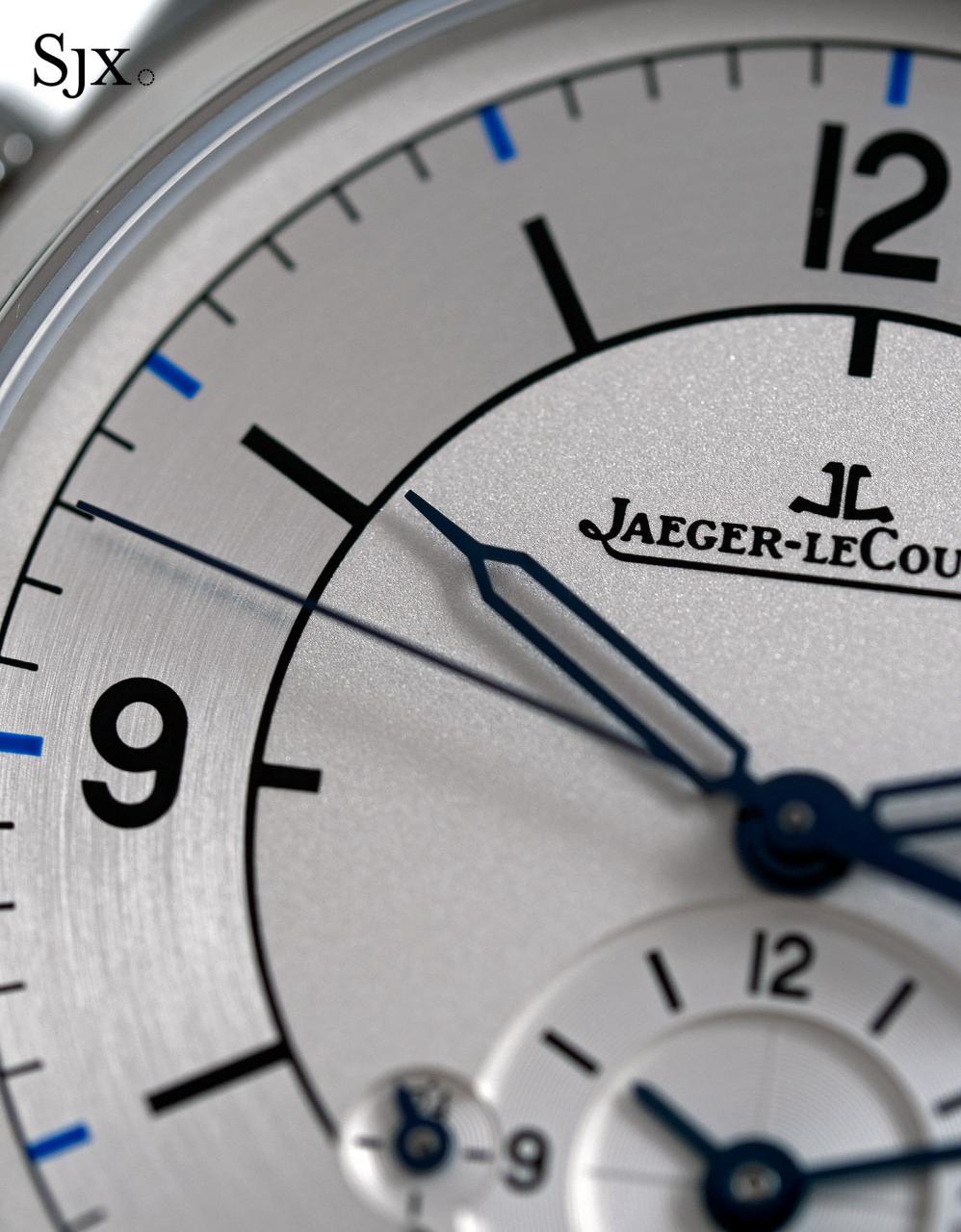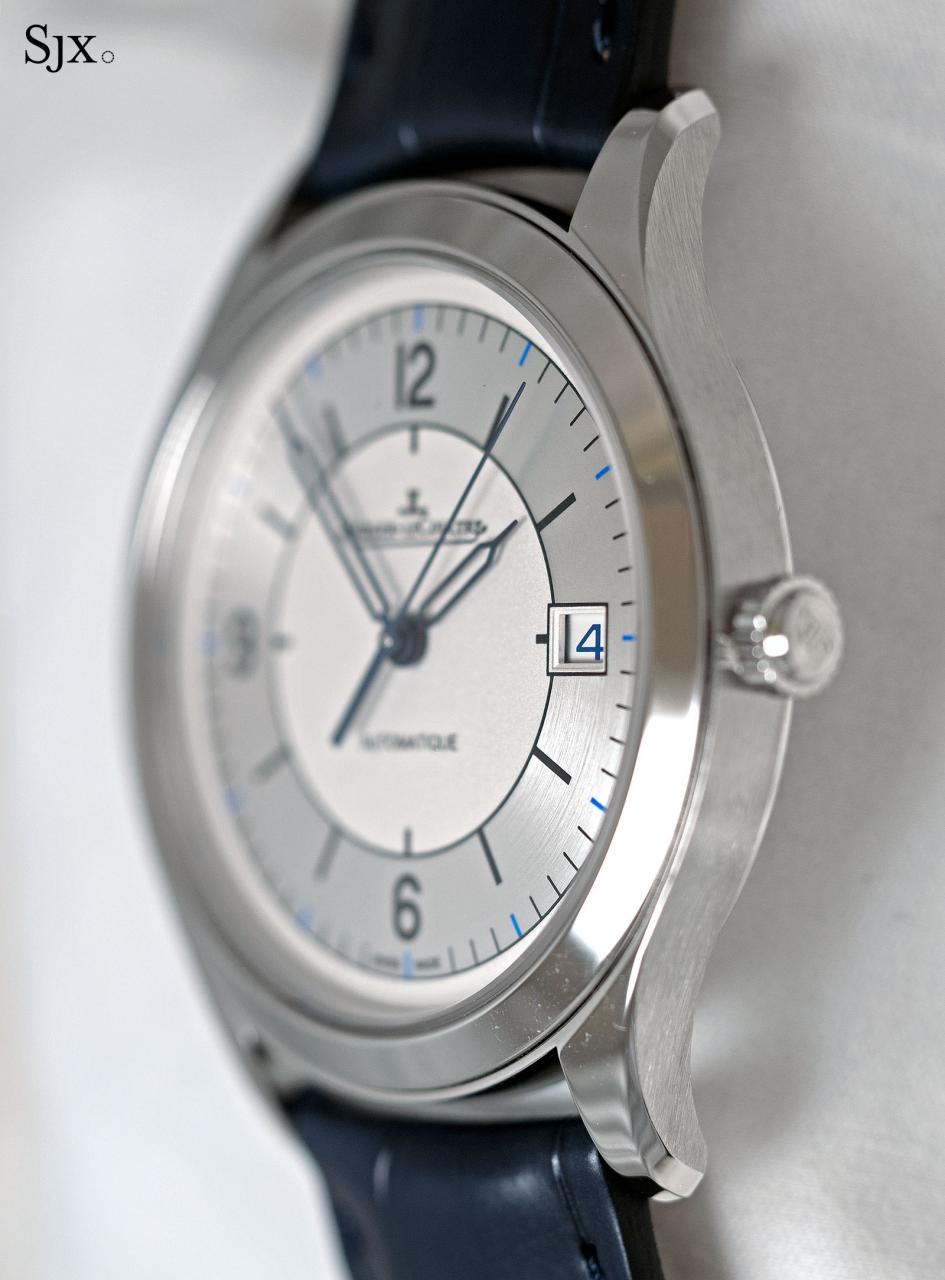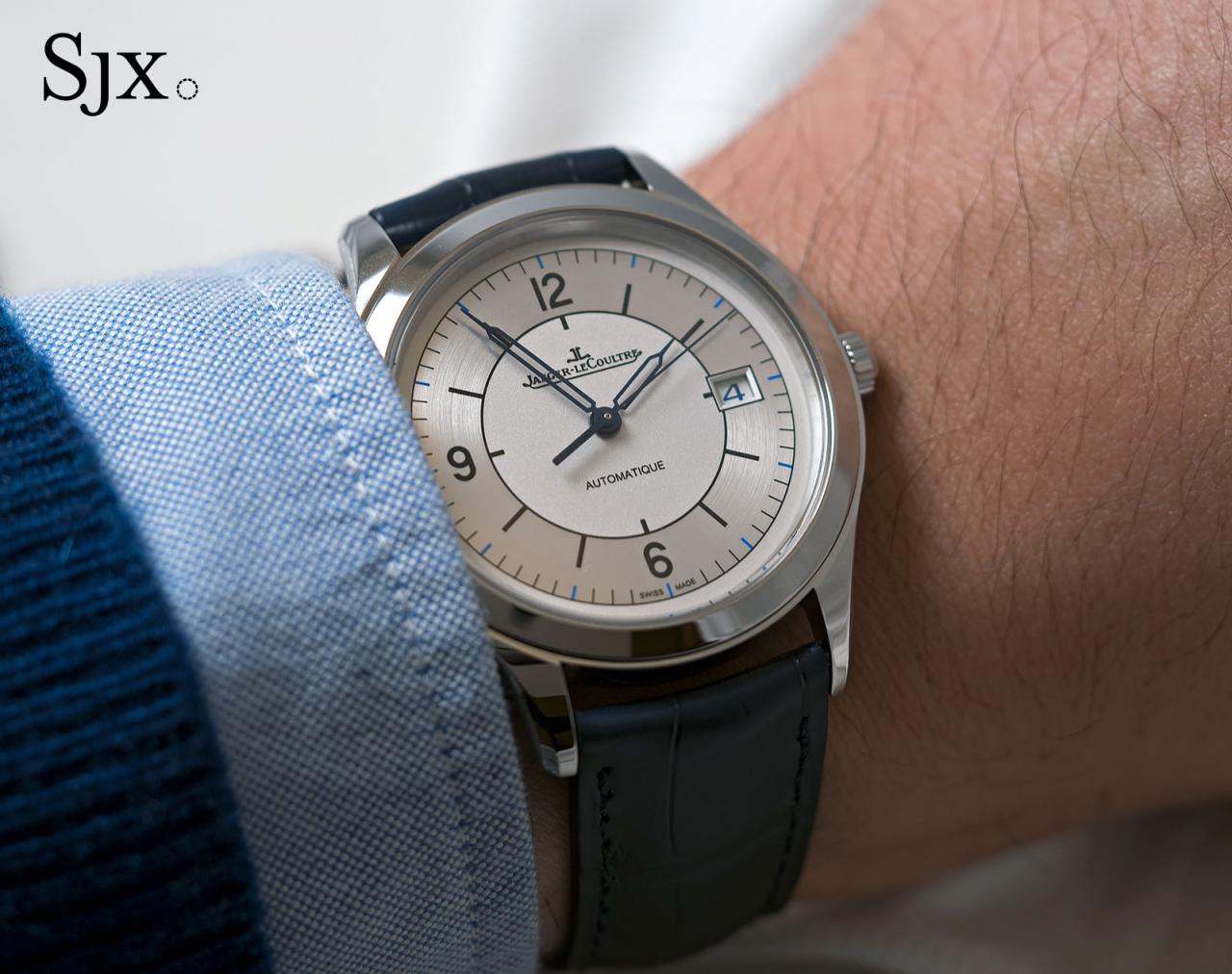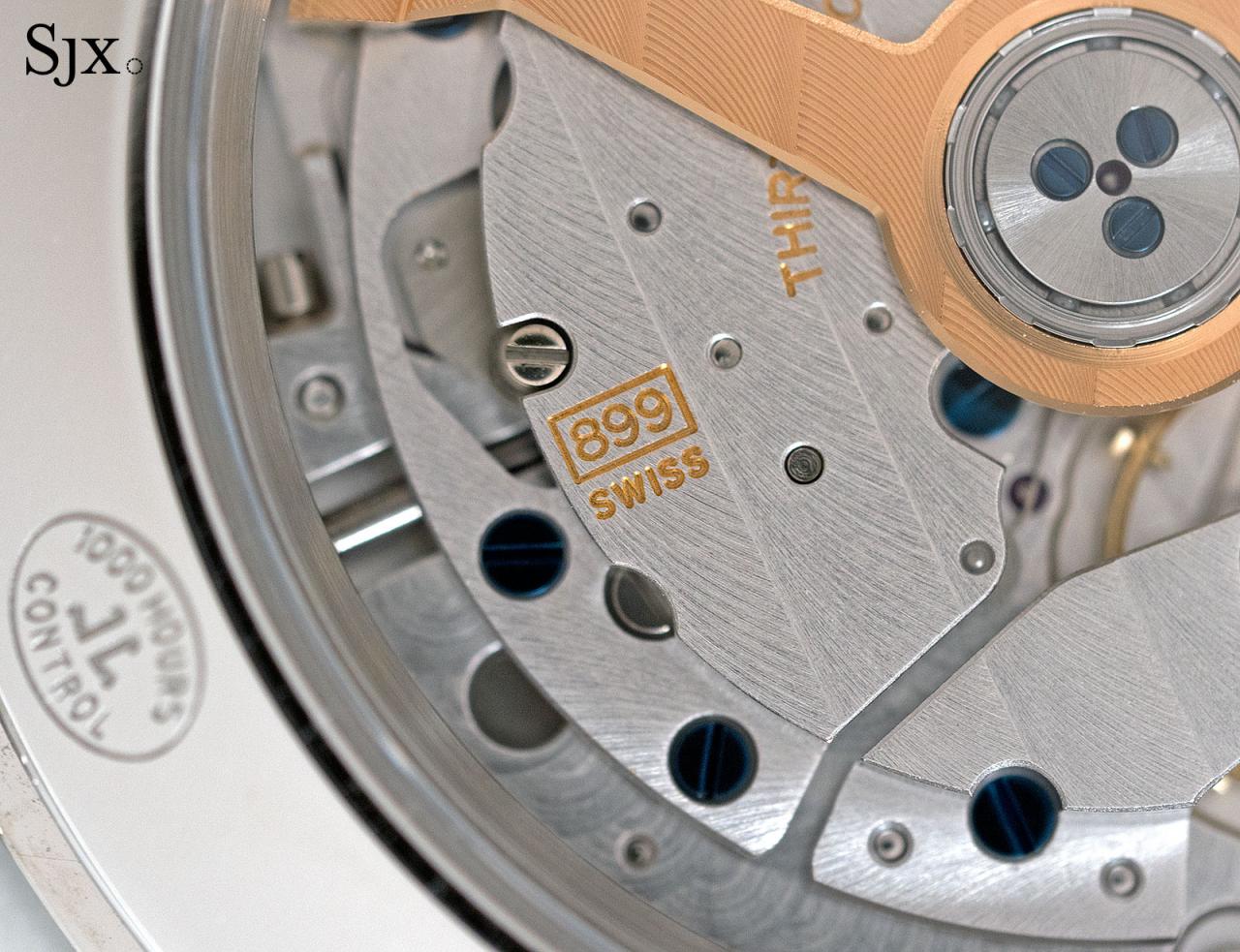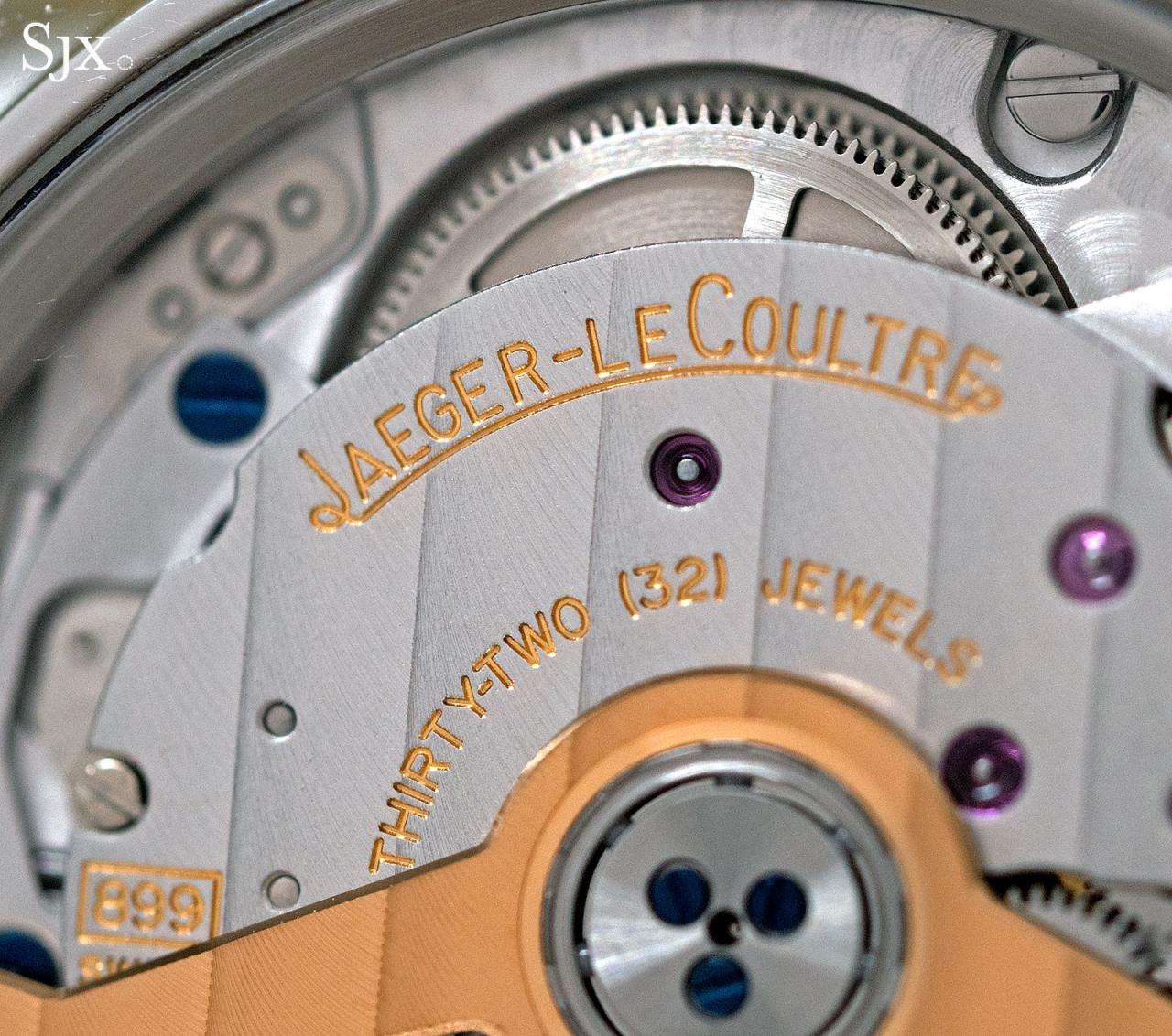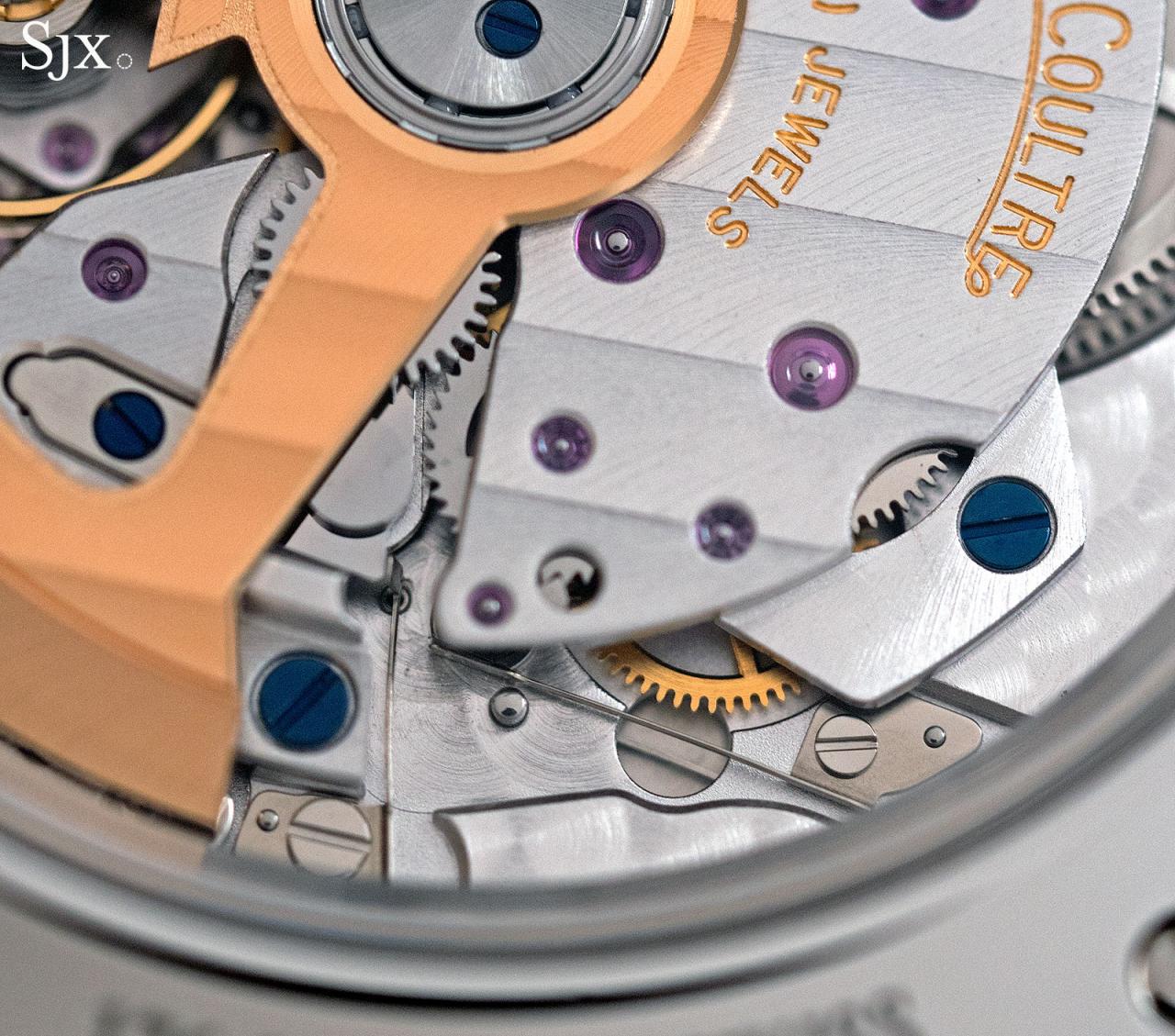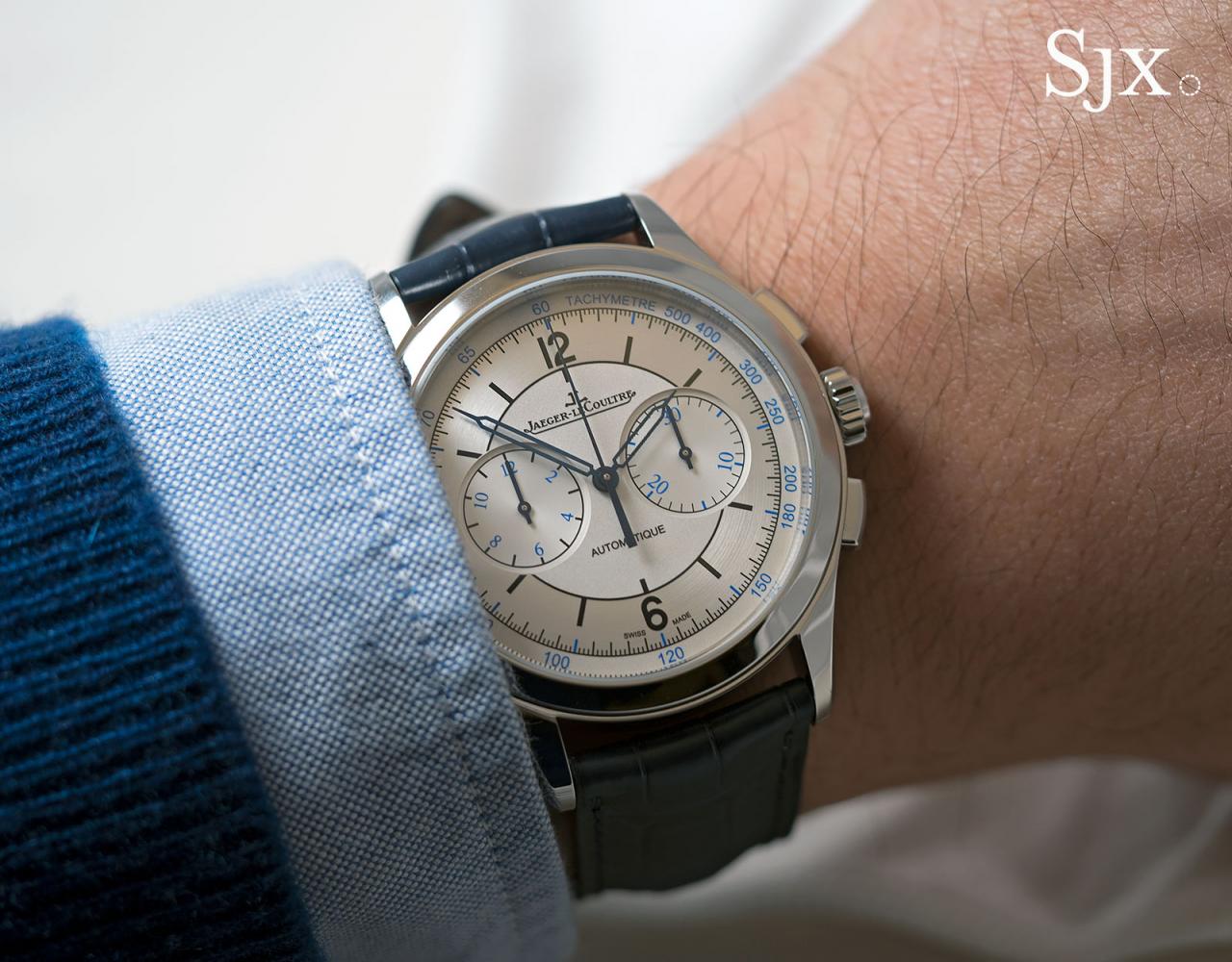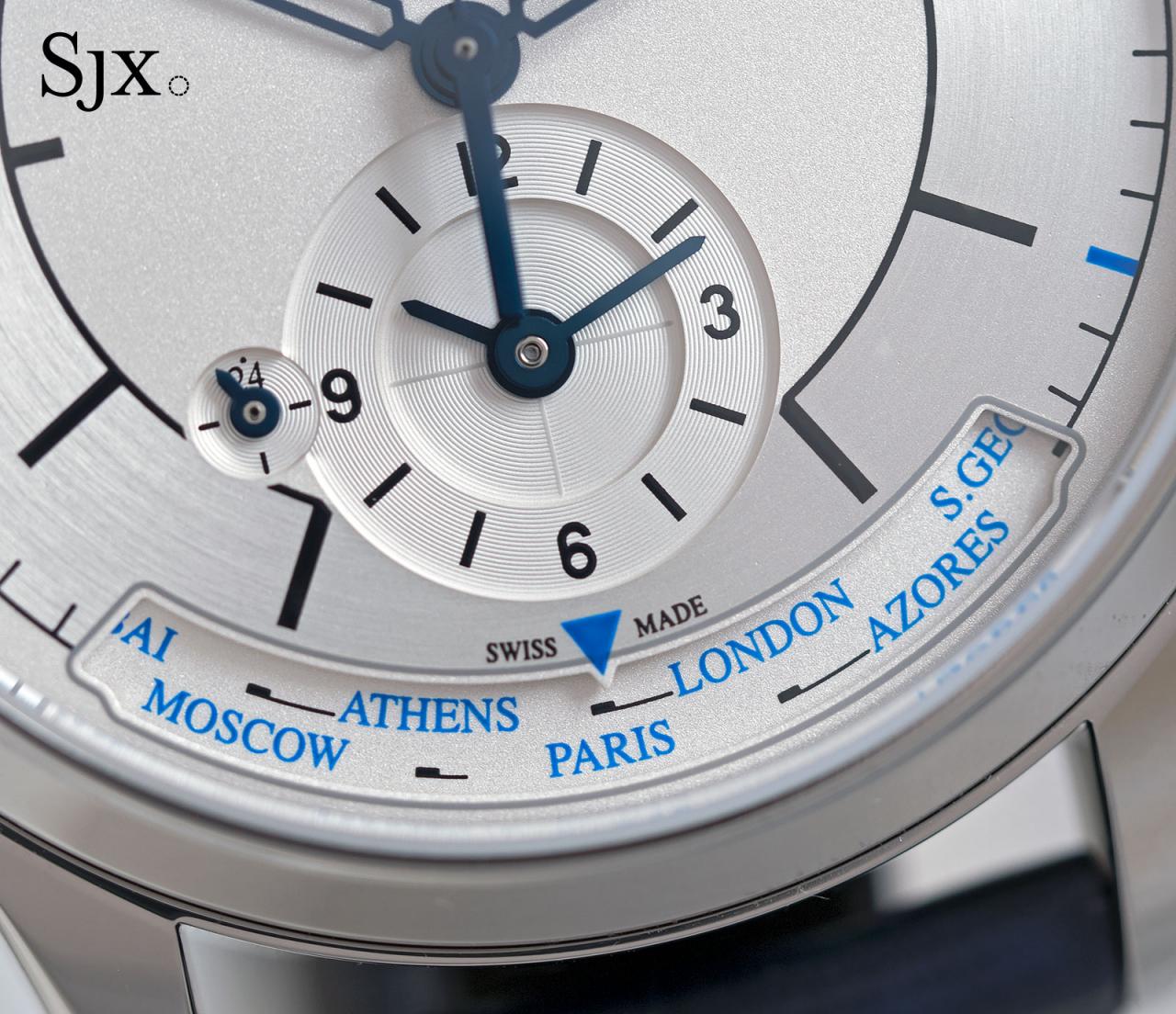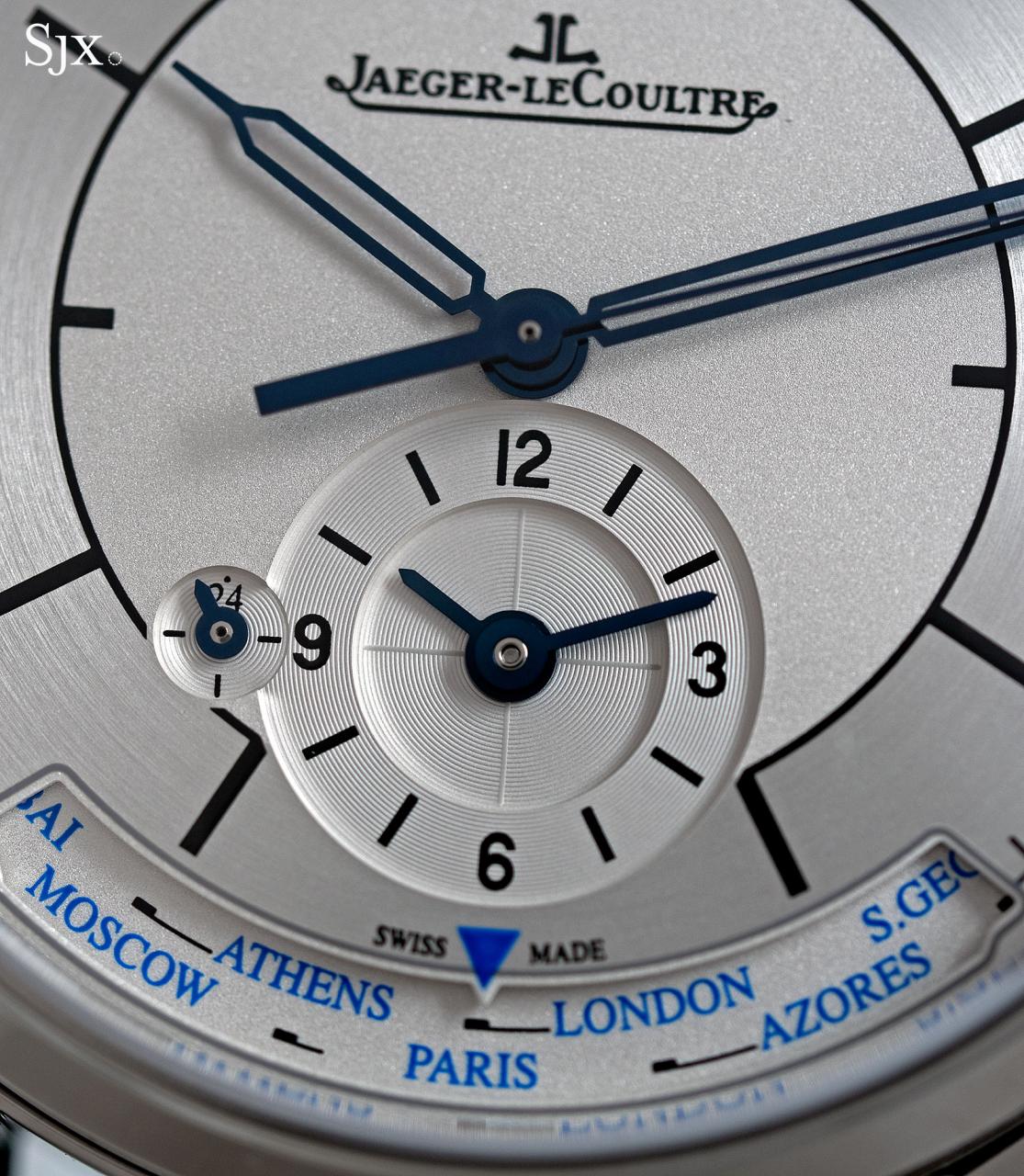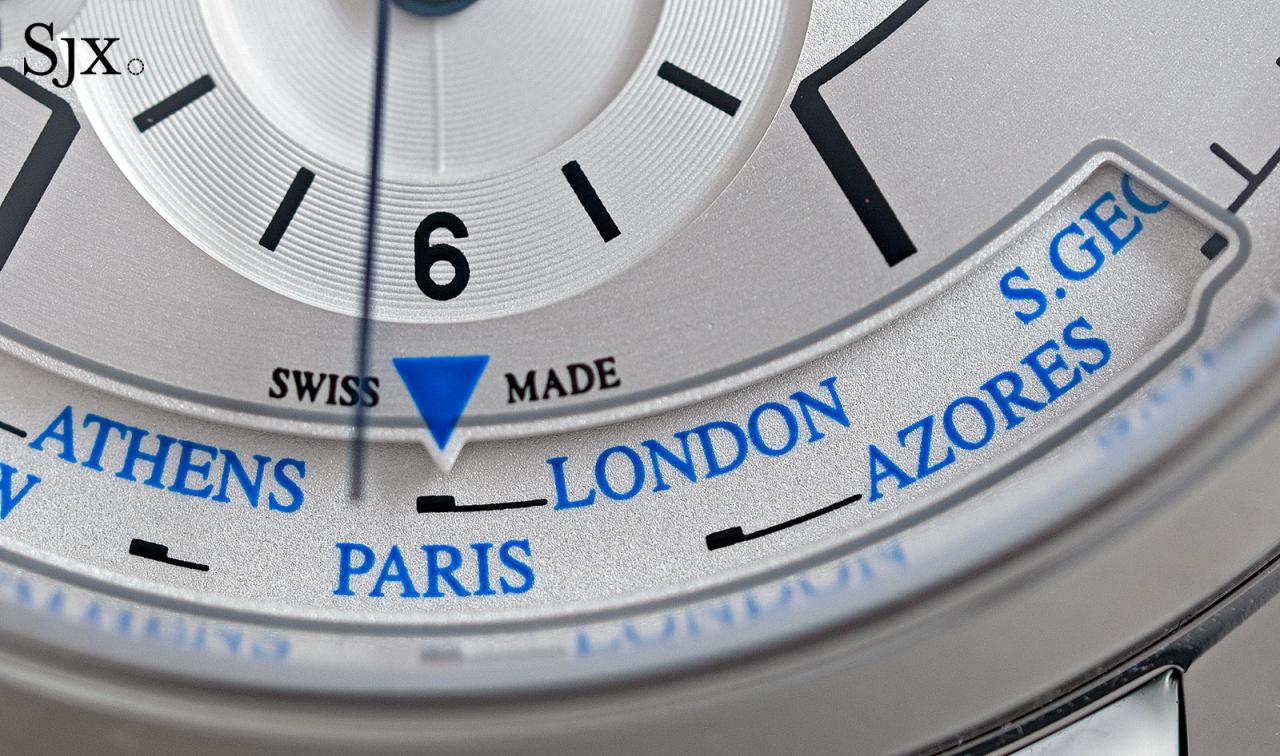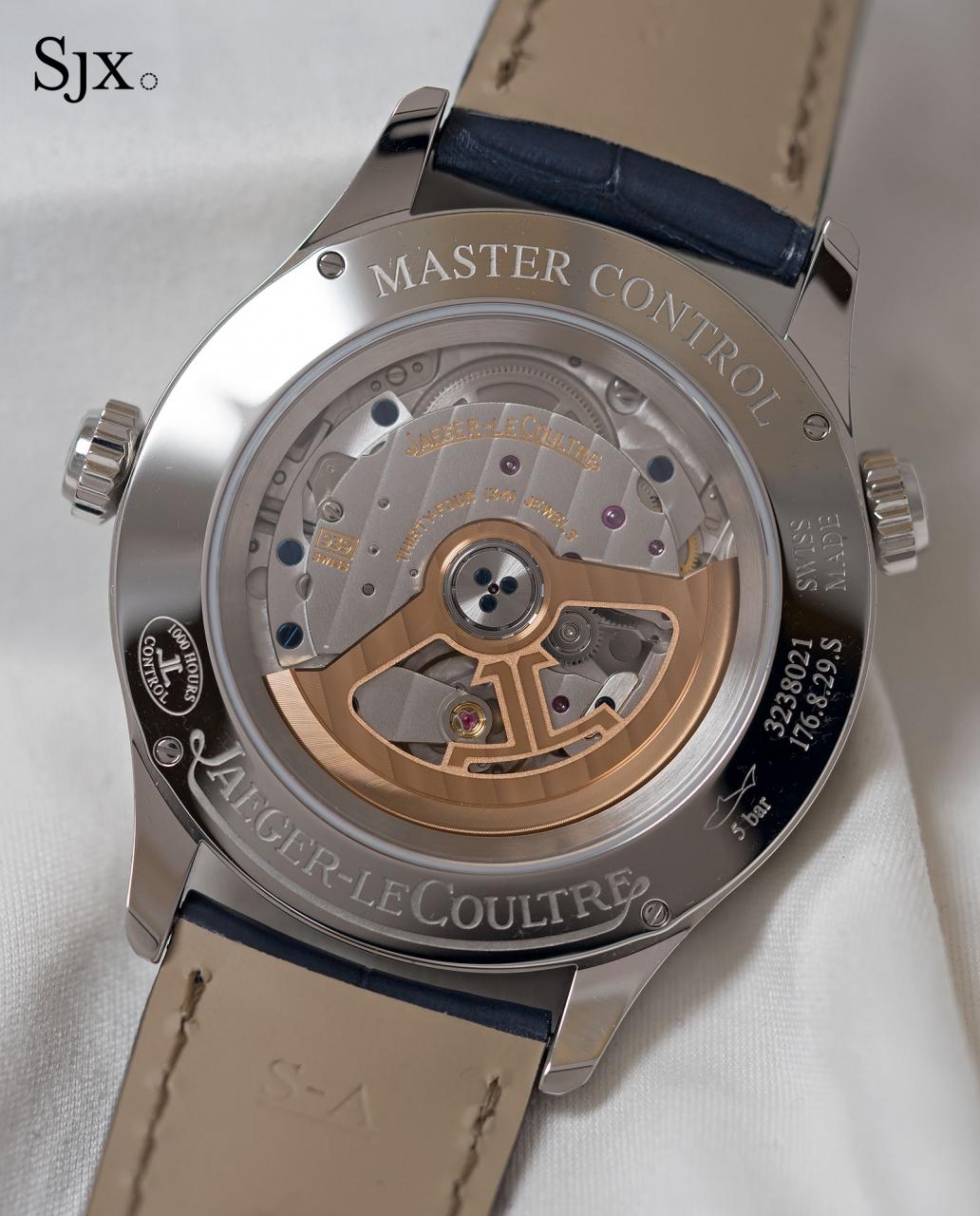The overall look is surely vintage-inspired, but similar to some of those new-vintage designs for your Reverso, these sector dial models stand by themselves and the chronograph has a mass appeal that is difficult to argue with. It is 39mm wide and rocking JLC’s signature Geographic GMT disadvantage, the Master Geographic displays two time zones (along with AM/PM in the off zone). The second timezone is selected using a city disk at six and the crown at 10. If you’ve ever used this complication you will know it is a practical and easy-to-manage GMT function that borrows just enough out of a world timer to be more than your casual GMT.The dial design is much more asymmetrical (with the offset am/pm indication), but I think that is the coolest of the 3 versions. The sector dial mixes well with the complication, and I think the GMT is only the ideal functionality to get a yearlong everyday watch. Another plus with all the Geographic complication is the fact that it works equally when changing time zones for travel, or checking other time zones when linking with colleagues or friends.Those that understand JLC’s offerings understand that they have a good deal of beautifully made watches under $10,000. So, while the cost point of these sector dial variations is attractive (especially against the backdrop of SIHH), the actual success here’s the available sizing and the designs which are both beautiful and distinctive among their siblings. While I am sure that some will take umbrage with the deficiency of lume or the highly vintage-inspired hand selection, the layout works so well when seen as a whole.
Jaeger-LeCoultre has just unveiled a full range of watches inspired by the Memovox Polaris E859, the 1968 diver’s alarm that is now 50 years old. One of the most valuable vintage Jaeger-LeCoultre watches, the Polaris had a brief run with only 1714 ever made.
Now it has been has been repurposed into an entire range of watches for land and air, made up of five models from a three-hand automatic to another (yet another) remake of the original Polaris Memovox. Unifying elements across the collection include a dial with three types of surface finishing (frosted, brushed and satin); Super-Luminova applied hour markers; and short, faceted lugs.
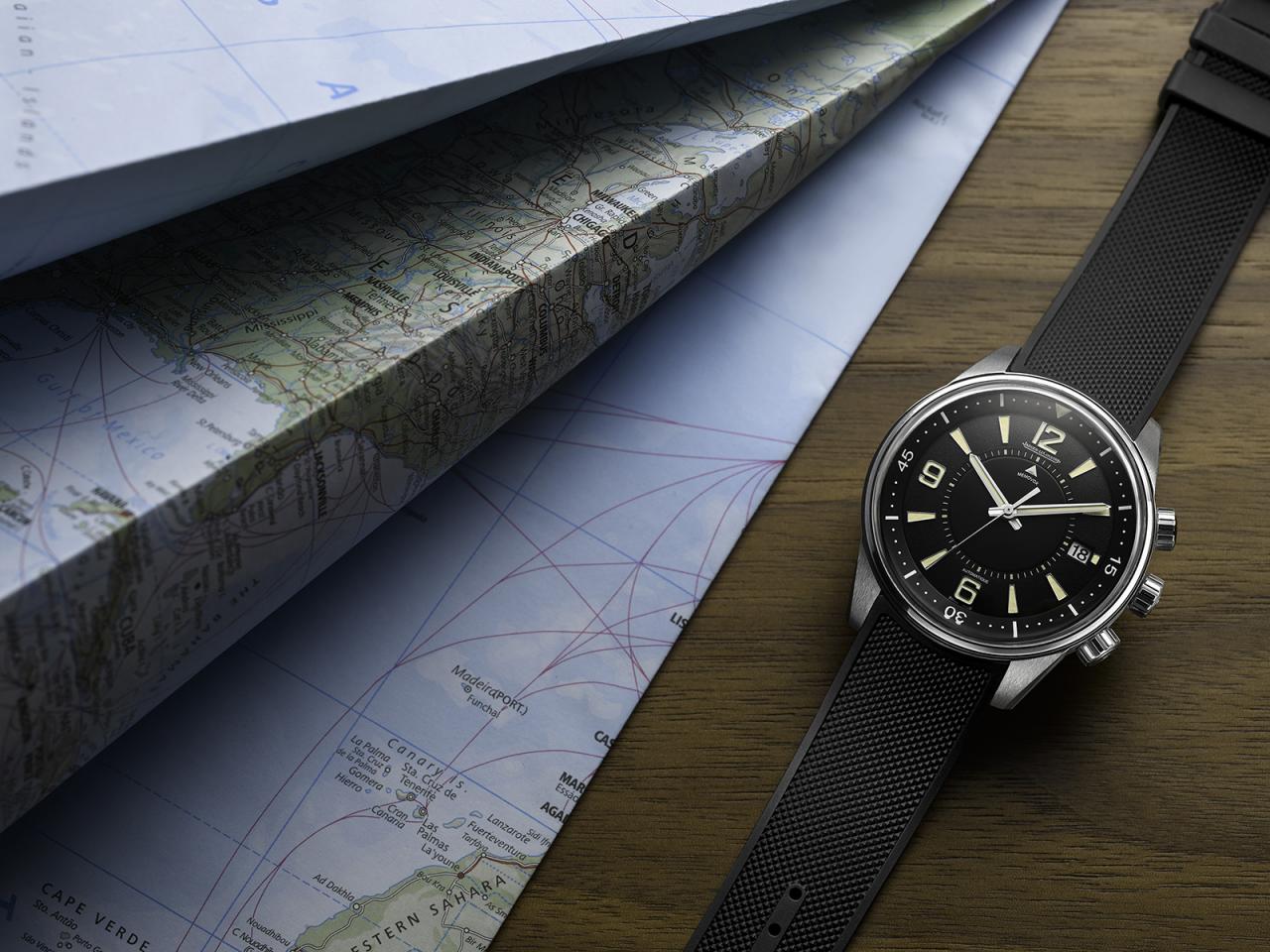
The Polaris Automatic features a dual crown system, with one to set the time and the other to turn the inner elapsed time bezel. Available with either a black or metallic blue dial, it measures 41mm in diameter and is powered by the cal. 898/1, the same movement that powers the Jaeger-LeCoultre Geophysic 1958.
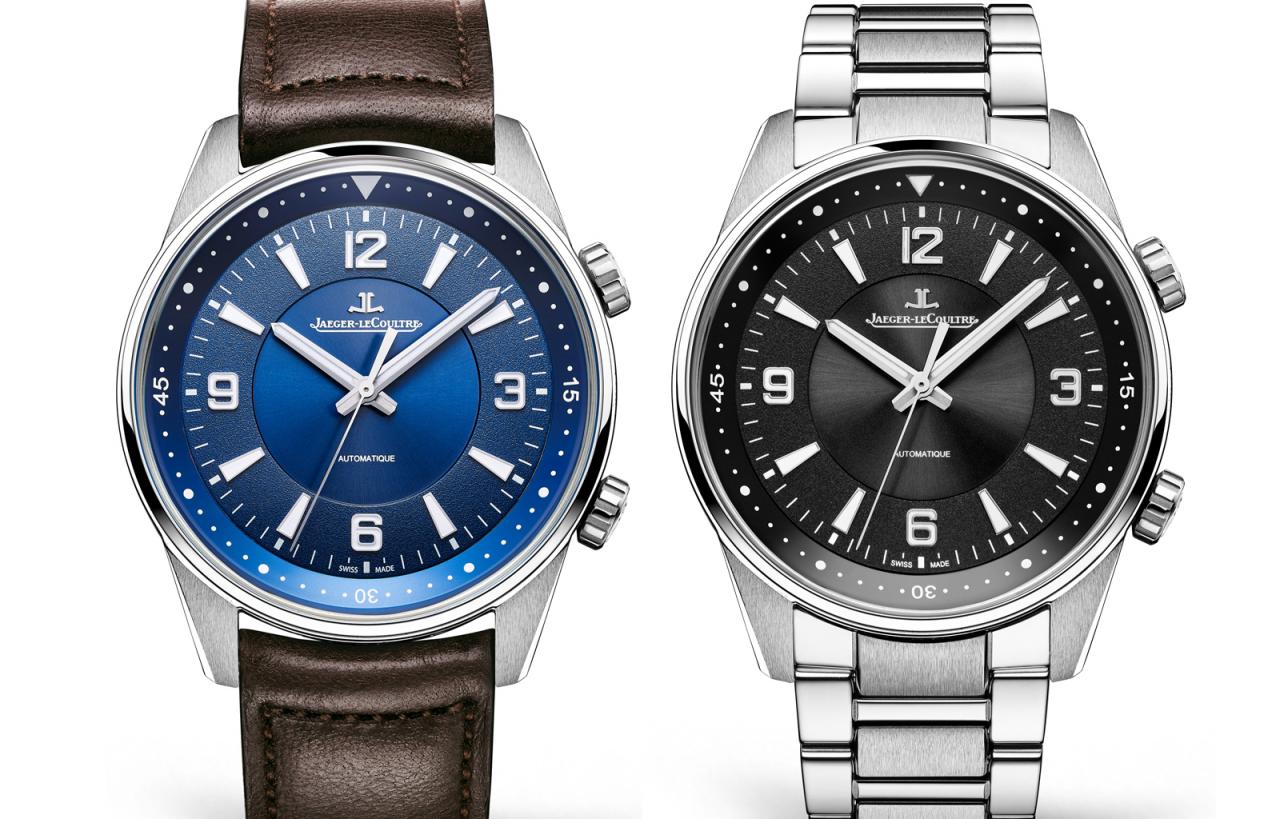
It costs US$6,600 on a calf leather strap, US$6,900 on an alligator strap, and US$7,600 on the stainless steel bracelet.
The biggest departure from the diver’s watch in the collection is undoubtedly the Polaris Chronograph, which is the driver’s chronograph cousin of a diving alarm. Measuring 42mm in diameter, it has a bi-compax layout with a tachymeter scale.
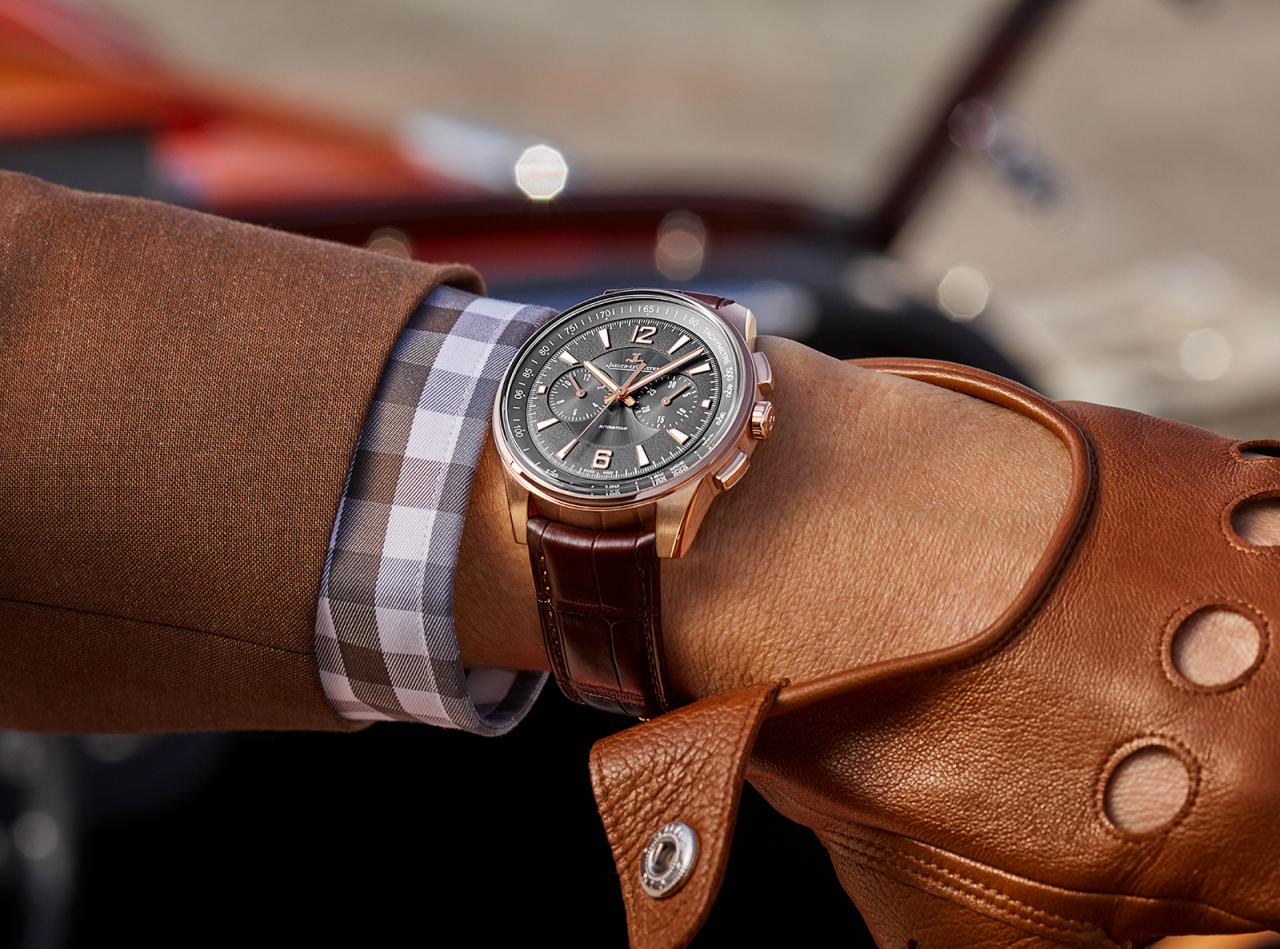
The movement inside is the column wheel-quipped cal. 751. Unlike the other Polaris models, it is available in both rose gold and steel.
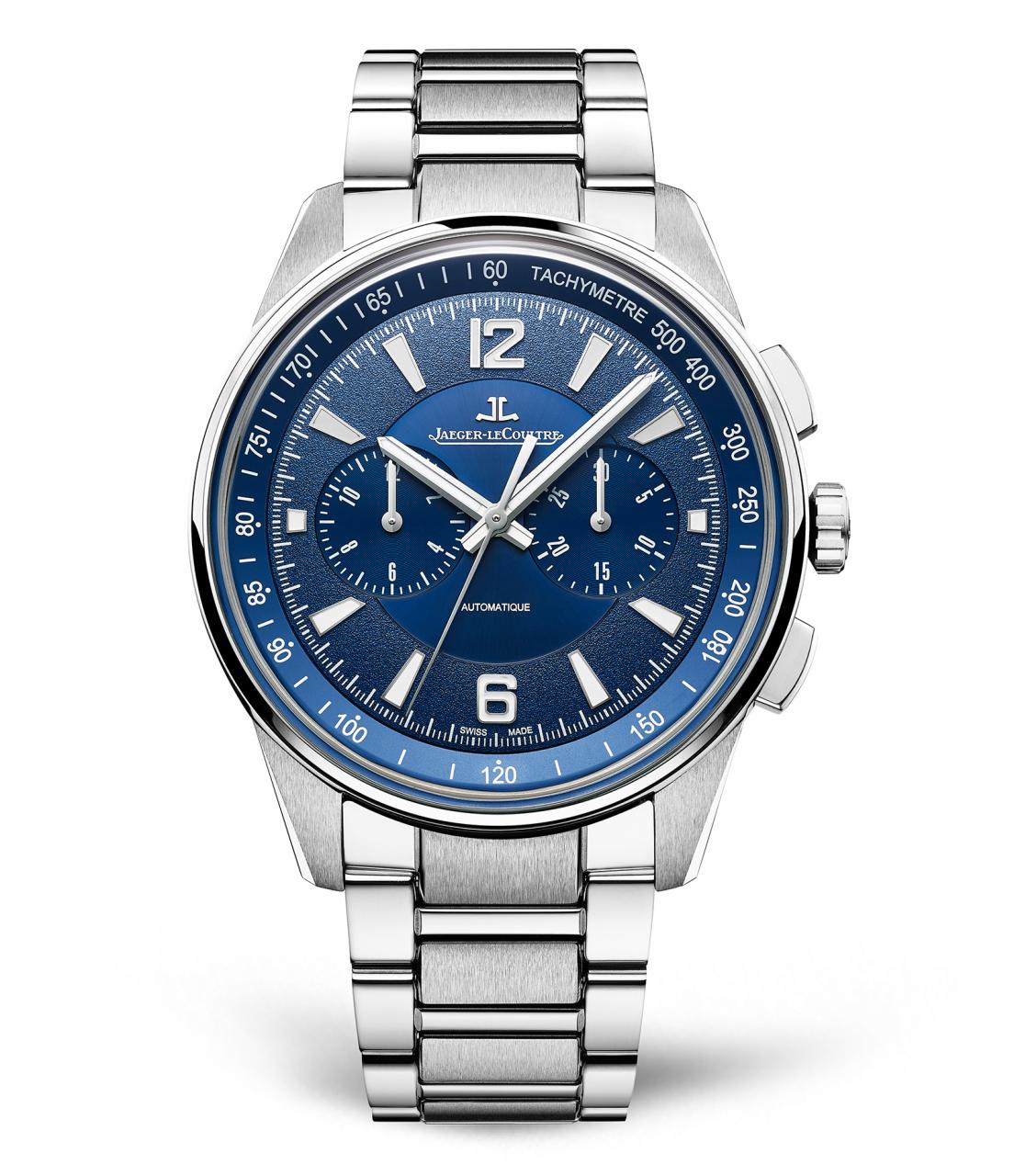
The stainless steel model on a calf strap is US$10,000, while on an alligator strap it’s US$10,100. And on a steel bracelet the price is $10,900, with the 18k rose gold model being US$24,500.
The most complicated piece in the collection, the Polaris Chronograph World Time, combines a chronograph and world time function. The case was expanded to 44mm to accommodate the various indicators on the dial.
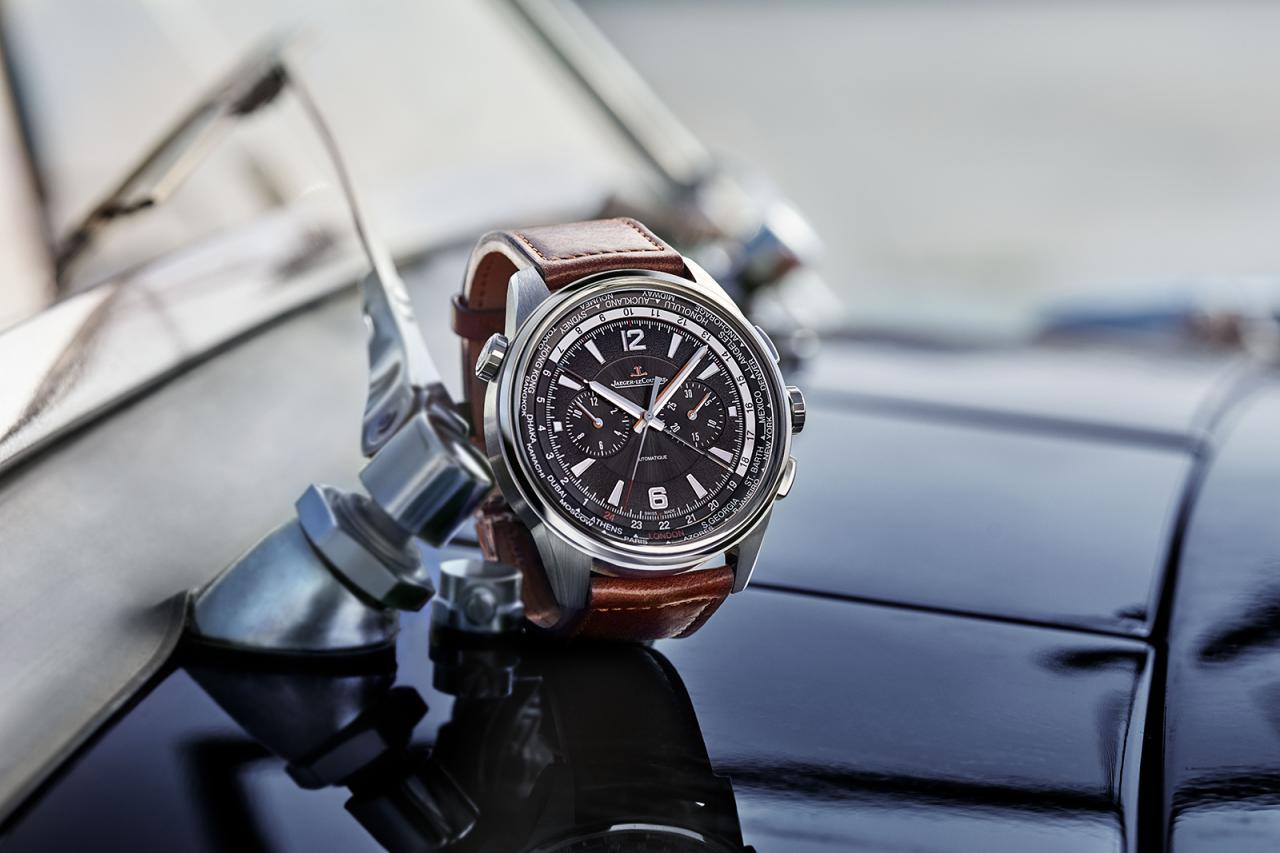
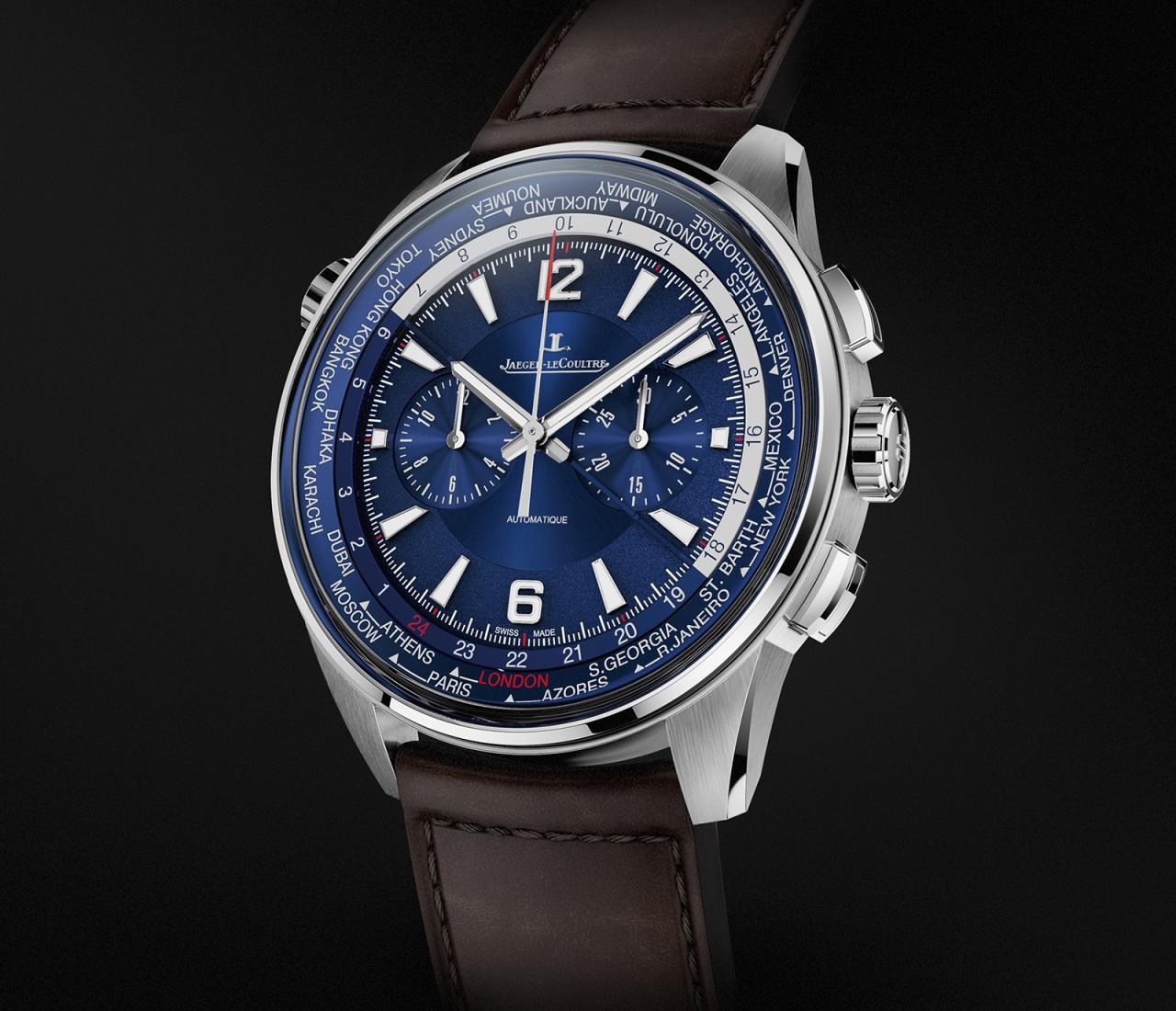
While large it is also considerably lightweight, being made of titanium and relatively slim at less than 13mm high. This is priced at US$14,500 on a calfskin strap and US$14,600 on an alligator strap.
The Polaris Date resembles the vintage alarm but isn’t one, instead it is a time-only watch with a date display at three o’clock like the original Polaris.
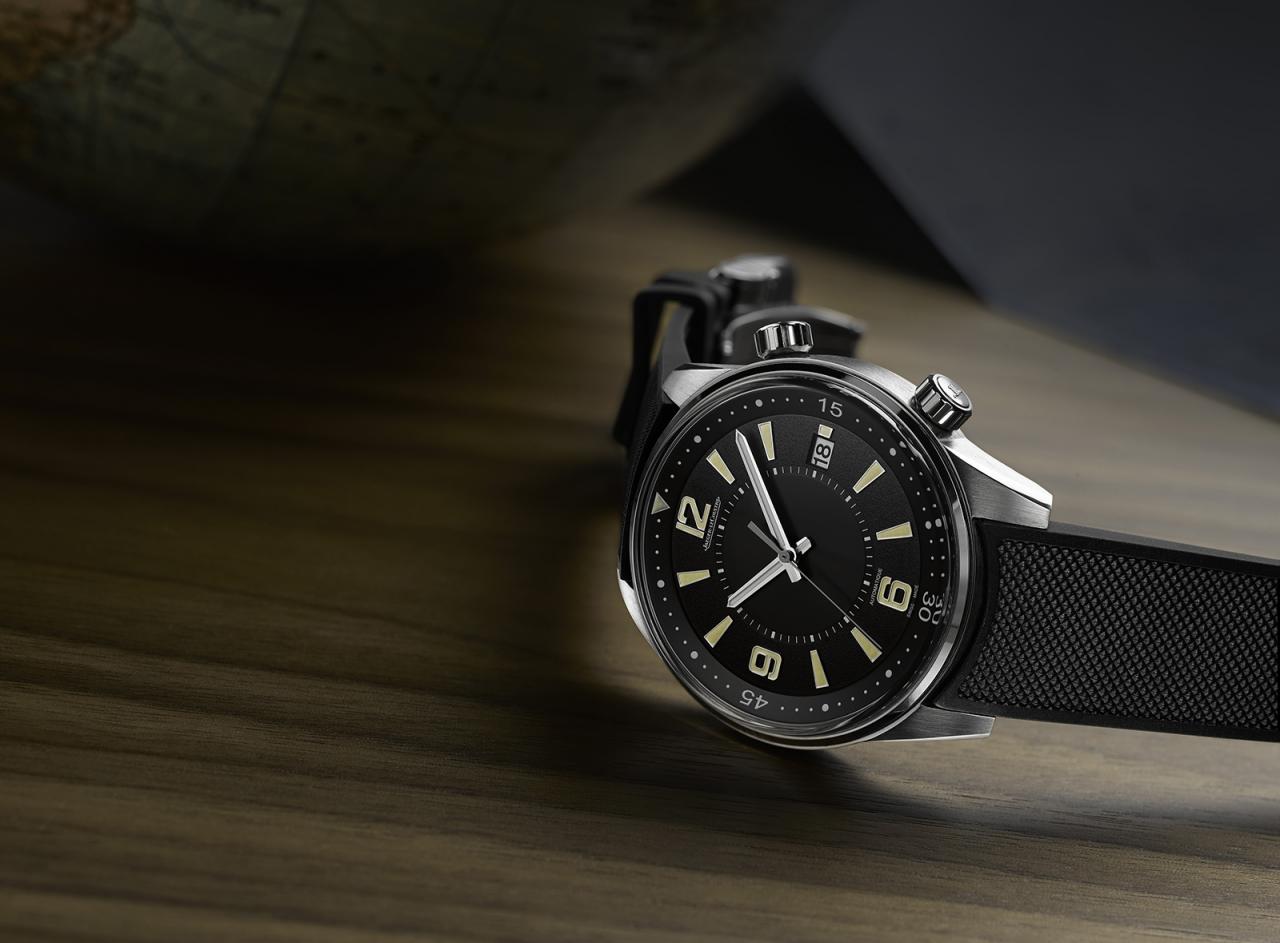
It inherits all attributes of the 1968 original including dual crowns, an inner bezel, trapezoidal indices, a railway track for the minutes, a box-type crystal as well as beige lume to mimic aged tritium. The case is the same 42mm as the vintage Polaris was, while its solid caseback features an engraving of a diver.
The Polaris Date is priced at US$7,750 on a rubber strap and US$8,700 on the stainless steel bracelet.
The 50th anniversary limited edition is the Polaris Memovox. Drawing heavily on the original but not an out and out remake, it keeps the triple crown and the triangular alarm indicator, but is a distinctly modern creation with its wide hands and chunky case. The departure from the original design is a good move, for Jaeger-LeCoultre already produced three variations of the Polaris remake in 2008.
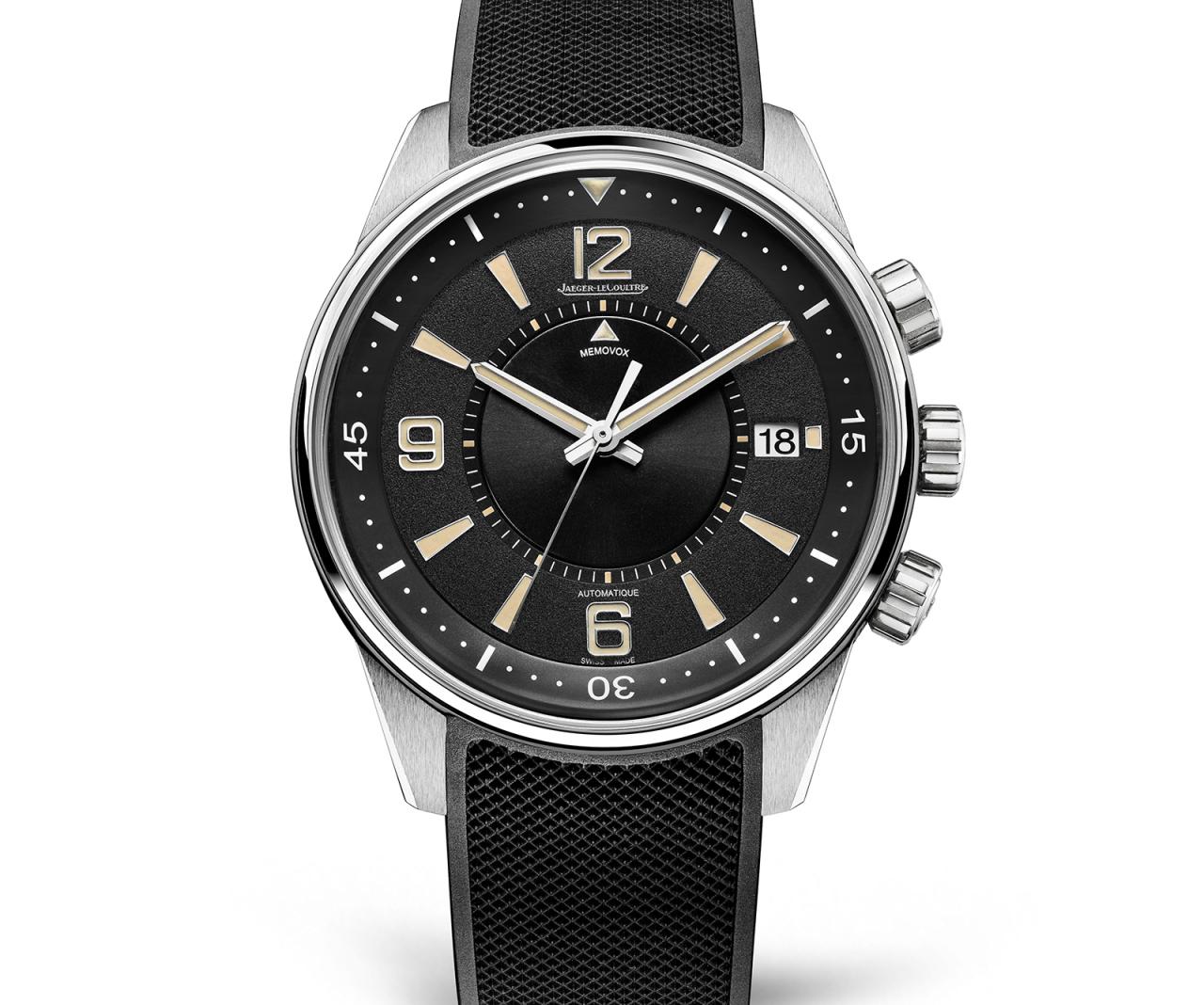
Like the Polaris Date, it has faux vintage lume, as well as a 42mm case that’s rated to 200m. It features the cal. 956 automatic alarm movement, which is used in all modern Jaeger-LeCoultre alarm watches. The Polaris Memovox is limited to 1,000 pieces and costs US$12,600.
